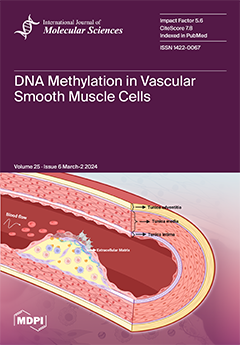Guanine nucleotide-exchange factors (
GEFs) genes play key roles in plant root and pollen tube growth, phytohormone responses, and abiotic stress responses.
RopGEF genes in
Brassica rapa have not yet been explored. Here,
GEF genes were found to be distributed across eight
[...] Read more.
Guanine nucleotide-exchange factors (
GEFs) genes play key roles in plant root and pollen tube growth, phytohormone responses, and abiotic stress responses.
RopGEF genes in
Brassica rapa have not yet been explored. Here,
GEF genes were found to be distributed across eight chromosomes in
B. rapa and were classified into three subfamilies. Promoter sequence analysis of
BrRopGEFs revealed the presence of
cis-elements characteristic of
BrRopGEF promoters, and these
cis-elements play a role in regulating abiotic stress tolerance and stress-related hormone responses. Organ-specific expression profiling demonstrated that
BrRopGEFs were ubiquitously expressed in all organs, especially the roots, suggesting that they play a role in diverse biological processes. Gene expression analysis revealed that the expression of
BrRopGEF13 was significantly up-regulated under osmotic stress and salt stress. RT-qPCR analysis revealed that the expression of
BrRopGEF13 was significantly down-regulated under various types of abiotic stress. Protein–protein interaction (PPI) network analysis revealed interactions between RopGEF11, the homolog of
BrRopGEF9, and the VPS34 protein in
Arabidopsis thaliana, as well as interactions between
AtRopGEF1, the homolog of
BrRopGEF13 in Arabidopsis, and the ABI1, HAB1, PP2CA, and CPK4 proteins. VPS34, ABI1, HAB1, PP2CA, and CPK4 have previously been shown to confer resistance to unfavorable environments. Overall, our findings suggest that
BrRopGEF9 and
BrRopGEF13 play significant roles in regulating abiotic stress tolerance. These findings will aid future studies aimed at clarifying the functional characteristics of
BrRopGEFs.
Full article






